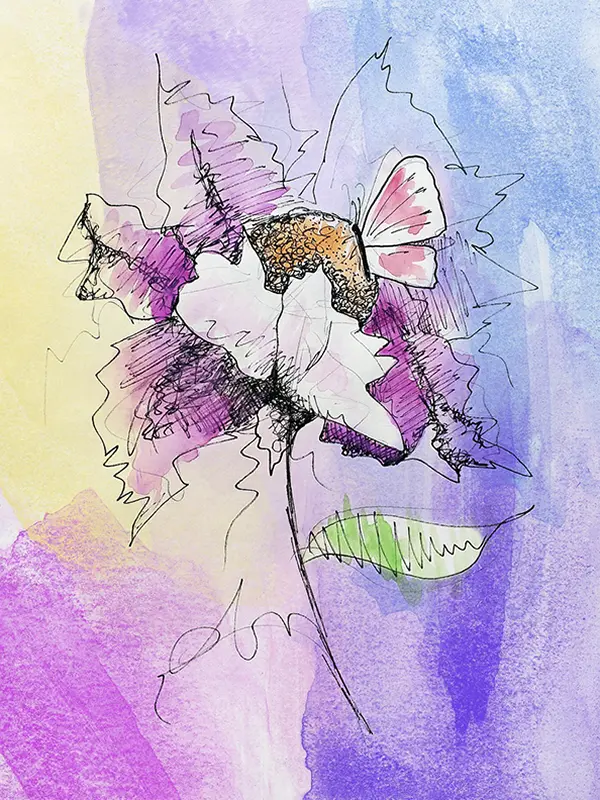

In watercolor painting, many beginners strive to make their work “look realistic.” However, truly captivating pieces are rarely just about realism—they excel through well-controlled details and a clear, prominent subject. This article will guide you on using techniques like strategic blank space, focal point design, and supporting elements to create depth and artistic expression.
A common mistake beginners make is trying to depict every object in the scene in full detail. While this may make the painting “look realistic,” it often results in a cluttered composition without a clear focal point.
Watercolor painting, like writing, requires a clear focus with other elements simplified. Leaving appropriate blank space gives the composition room to breathe and effectively guides the viewer’s eye. In watercolor, this approach is often referred to as “balanced density” or “contrast between solid and empty.”
👉 Further Reading:Broken Ink Landscape Painting
To make the main subject the focal point of the composition, you can apply three principles:
Contrast of Light and Shadow: When the subject contrasts with the background in light and shadow, it naturally draws the viewer’s eye.
Color Saturation and Temperature:Use higher saturation and warm colors for the subject, while keeping the background less saturated.
Detail Layers:Keep fine brushwork for the subject, while simplifying the supporting elements.
The role of secondary elements is to support, not compete with the main subject for attention. Their colors should be lighter, brushstrokes looser, and edges softer. In composition, they should guide the viewer’s eye rather than distract it.
Overly Realistic Painting:Every leaf and window frame is painted in great detail. While it may seem exquisite, the composition can appear stiff, and viewers may feel fatigued from the excessive details.
Painting with Use of Blank Space:The focal area is painted in detail, while the background uses soft washes with some blank space left. This approach gives the painting room to breathe and naturally directs the viewer’s attention to the main subject, enhancing its artistic appeal.
👉 Internal Learning Resources:“Complete Guide to Watercolor Colors and Techniques”|Artify Ho Yeh Studio
If you want to improve your control over details, you can try the following exercise:
Prepare Reference Photos:For example, a vase, fruit, or still life.
Set a 10-Minute Timer:Force yourself to focus on the main subject, not on minor details.
Focus Only on the Main Subject:保留主要光影與形狀,省略背景和多餘紋理。
Compare Repeatedly:Try creating a “full-detail” version and a “simplified” version, then compare the visual impact.
This type of exercise helps you quickly distill the main subject and develop the habit of “making your painting realistic while keeping it beautiful.”
Watercolor painting is not about “painting more is better,” but about “focusing on the right elements and leaving appropriate blank space.” Once you learn to control details and arrange focal points, your composition will naturally have hierarchy and balance between solid and empty areas. This is the essence of watercolor detail techniques.
Remember: A truly skilled artist knows how to make appropriate choices, creating paintings that are both realistic and filled with poetic and artistic beauty.